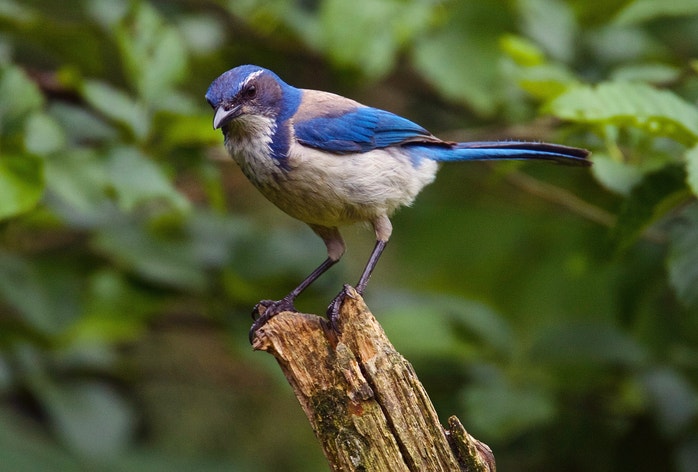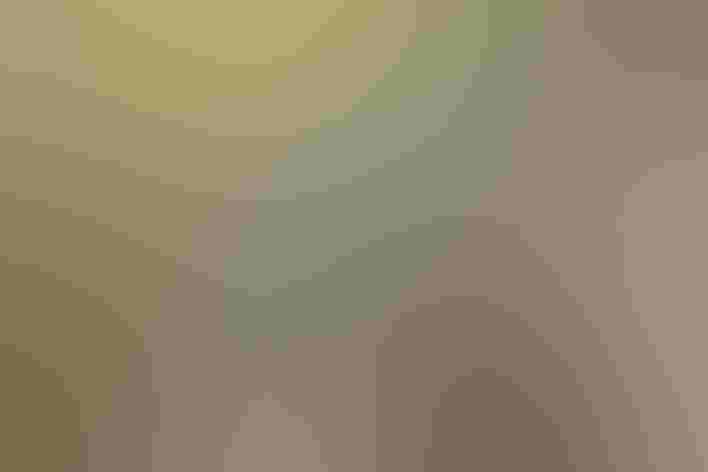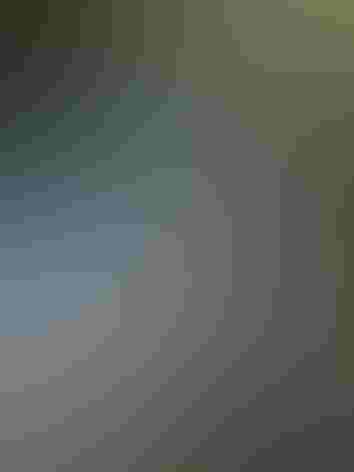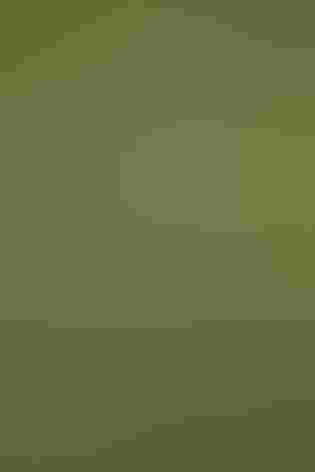California Scrub-Jay
A simple vista
This is the "blue jay" of parks, neighborhoods, and riverside woods near the Pacific Coast. Pairs of California Scrub-Jays are often seen swooping across clearings, giving harsh calls, with their long tails flopping in flight. They readily come to backyard bird feeders. Until recently, this jay was considered part of the same species as the Woodhouse's Scrub-Jay; the two were officially "split" in July 2016.
Todo el texto de la guía de aves y los mapas de distribución fueron adaptados de Lives of North American Birds de Kenn Kaufman© 1996, utilizado con permiso de Houghton Mifflin Harcourt Publishing Company. Reservados todos los derechos.
Categoría
Crows, Magpies, Jays, Perching Birds
Conservación
Baja preocupación
Hábitat
Forests and Woodlands, Shrublands, Savannas, and Thickets, Urban and Suburban Habitats
Región
California
Comportamiento
Flap/Glide, Undulating
Población
1.600.000
Rango e identificación
Mapa de migración y distribución
Mostly a permanent resident. May disperse some distance in winter, especially in dry years when the oaks produce poor acorn crops.
Descripción
11-13" (28-33 cm). White throat bordered by streaked necklace; gray back contrasts with blue head, wings, and tail.
Tamaño
About the size of a Crow, About the size of a Robin
Color
Blue, Brown, Gray, White
Forma de alas
Broad, Rounded
Forma de cola
Long, Rounded, Wedge-shaped
Cantos y llamadas
Call is loud, throaty jayy? or jree? In flight, a long series of check-check-check notes.
Patrón de canto
Flat, Rising
Tipo de canto
Buzz, Rattle, Raucous, Trill
Hábitat
Oak woodland, oak scrub, riverside woods, and foothill forests of pinyon pine. Often very common in well-wooded suburbs and parks.
Suscríbase al boletín de Audubon para obtener más información sobre aves como el California Scrub-Jay
Comportamiento
Huevos
3-5, sometimes 2-7. Usually light green, spotted with olive or brown; sometimes paler gray or green with large reddish-brown spots. Incubation is by female, about 17-18 days. Male sometimes feeds female during incubation.
Cría
Fed by both parents. Young leave the nest about 18-22 days after hatching, but are tended to and fed by the adults for at least another month. Typically one brood per year, occasionally two.
Comportamiento alimentario
Forages on the ground and in trees, singly or in family units during breeding season, sometimes in flocks at other seasons. Often harvests acorns and buries them, perhaps to retrieve them later.
Dieta
Omnivorous. Diet varies with season. Eats a wide variety of insects, especially in summer, as well as a few spiders and snails. Moth caterpillars make up a major percentage of the items fed to the young. Winter diet may be mostly acorns and other seeds, nuts, and berries. Also eats some rodents, eggs and young of other birds, and small reptiles and amphibians.
Nidificación
Unlike the Florida Scrub-Jay and Mexican Jay, this species breeds in isolated pairs, not cooperative flocks. Pairs typically stay together all year on their permanent territory. Nest site is in a shrub or tree, usually fairly low, 5-15’ above the ground, but sometimes higher. Nest (built by both sexes) is a well-built, thick-walled cup of twigs and grass, lined with rootlets and sometimes with animal hair.
Vulnerabilidad
Estado de conservación
Healthy population overall, and increasing in recent years in northern part of range.
Amenazas climáticas que enfrenta el California Scrub-Jay
Elija un escenario de temperatura a continuación para ver qué amenazas afectarán a esta especie de ave a medida que aumente el calentamiento global. Las mismas amenazas impulsadas por el cambio climático que ponen en riesgo a las aves afectarán también a otras especies de vida silvestre y a las personas.








